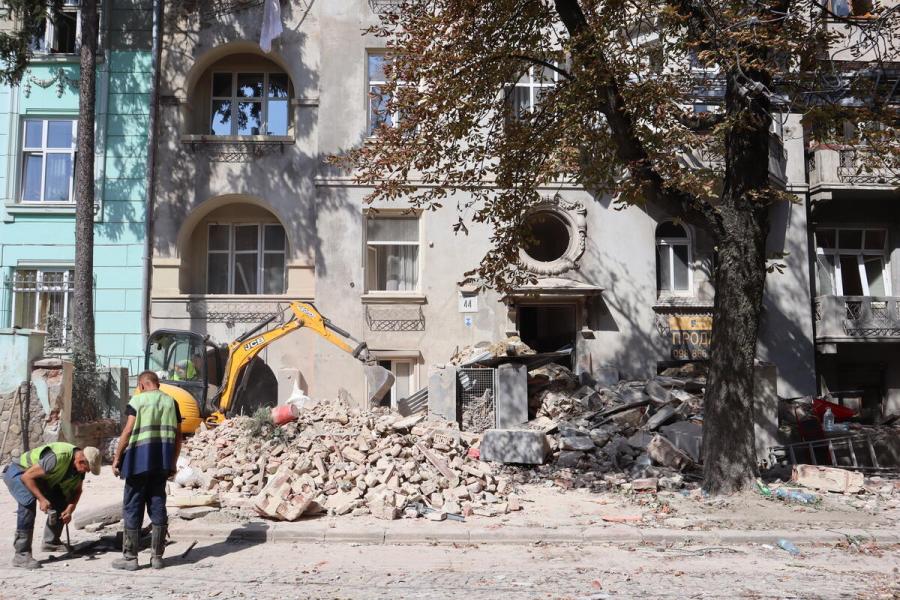Population figures | 2022 - 2025
2025 situation overview
The full-scale war in Ukraine enters its fourth year early in 2025, with escalations in hostilities driving further displacement, as coordinated aerial attacks target civilian infrastructure across the country. The 2025 Humanitarian Needs and Response Plan estimates that some 12.7 million people are in need of multisectoral humanitarian assistance. As of August 2024, 3.7 million people were displaced inside the country (IOM – DTM Ukraine), while an additional 6.7 million refugees from Ukraine were seeking safety beyond Ukraine’s borders, including 6.2 million in countries across Europe. Whilst Government-led early recovery efforts are underway inside Ukraine, millions continue to be reliant on humanitarian assistance due to the unpredictable security landscape and the compromised state of energy infrastructure across parts of the country, coupled with the strained economic situation and limited livelihood opportunities.
To support governments in responding to the humanitarian needs in Ukraine and in host countries, UNHCR is appealing for $803.6 million.
In Ukraine, UNHCR requires $550 million to provide life-saving support to displaced populations. In addition to delivering urgent assistance in frontline areas, UNHCR will support Government-led early recovery efforts in support of voluntary return through area-based programmes with protection, housing, infrastructure, and inclusion components. Overall, UNHCR seeks to reach over 1.1 million IDPs with protection services. This will enable displaced people to return home or find stability and rebuild their lives within host communities. If funding is available, UNHCR will seek to reach 50% of IDPs in Ukraine with multipurpose cash assistance. At the same time, work with development actors, governments, and donors to support the transition from humanitarian cash assistance programmes to progressive inclusion into national social protection systems will continue, in line with UNHCR’s sustainable responses approach.
Along with 20 partners, UNHCR’s 2024/25 winter response plan inside Ukraine will seek to support displaced and war-affected people with specific vulnerabilities to meet additional seasonal needs. UNHCR aims to reach 550,000 people with winter cash assistance, 41,400 people with better-insulated homes and living spaces, and 33,600 people with essential winter items, while providing alternative energy support to strengthen household-level and community resilience.
In countries hosting refugees from Ukraine in Europe, UNHCR requires $253.6 million to assist some 600,000 individuals. Countries neighbouring Ukraine and across Europe are generously providing access to legal status, services, and rights for refugees from Ukraine. UNHCR welcomes the extension of the European Union’s Temporary Protection Directive for people fleeing the war in Ukraine until March 2026, while advocacy continues for a unified approach towards a possible transition from Temporary Protection.
Most refugees from Ukraine intend to return home in the longer term, but the security situation prevents many from doing so, making it vital for host countries to continue to provide protection. However, reductions in assistance, disproportionately affecting vulnerable refugees, continue to give rise to harmful coping mechanisms, homelessness, and premature decisions to return. UNHCR will monitor developments and advocate for the rights of refugees, with a particular focus on the most vulnerable. Efforts to help refugees to reach well-informed and truly voluntary decisions on returning will continue, including through the “Ukraine is Home” digital platform.
UNHCR will support the inclusion of refugees from Ukraine in host countries by strengthening access to the labour market, social protection, health care and education. Support to language proficiency, access to information and referral to specialized services will be prioritized, as well as access to employment commensurate with refugees’ skills and qualifications. UNHCR will also maintain activities to prevent and respond to gender-based violence, as well as protection risks faced by children. Working with partners to increase the enrolment of refugee children from Ukraine in national education systems will remain a priority.
In line with the Refugee Coordination Model and in support of host authorities, UNHCR will continue coordinating the Ukraine Situation Regional Response Plan (RRP) for 2025-26 along with its partners, with the aim of strengthening access to rights, education, health services and social protection in host countries, advancing socioeconomic inclusion and social cohesion between refugees and host communities, while adapting the coordination approach to the situation and needs on the ground. Localization—including direct support to local and national actors, as well as maintenance of contingency and emergency response capacity—will continue to underpin the coordinated response. Some small-scale, targeted cash programmes and limited stockpiles of core relief items in support of preparedness will also remain in place.
Financial overview
Home repairs help restore Ukrainian communities shattered by war
By Charlie Dunmore and Melik Benkritly in Borodianka, Ukraine
For the past 30 years, Liudmyla has grown vegetables on a large plot of land beside her house in Ozershchyna, a rural village an hour west of Kyiv. Now aged 70, she still harvests hundreds of kilograms of potatoes each year by hand, storing them for the months ahead in an underground root cellar in her yard.
Faced with huge destruction to civilian infrastructure, UNHCR, with EU humanitarian aid support carries out repairs to family homes where the impact goes far beyond bricks and mortar.
Read the story












